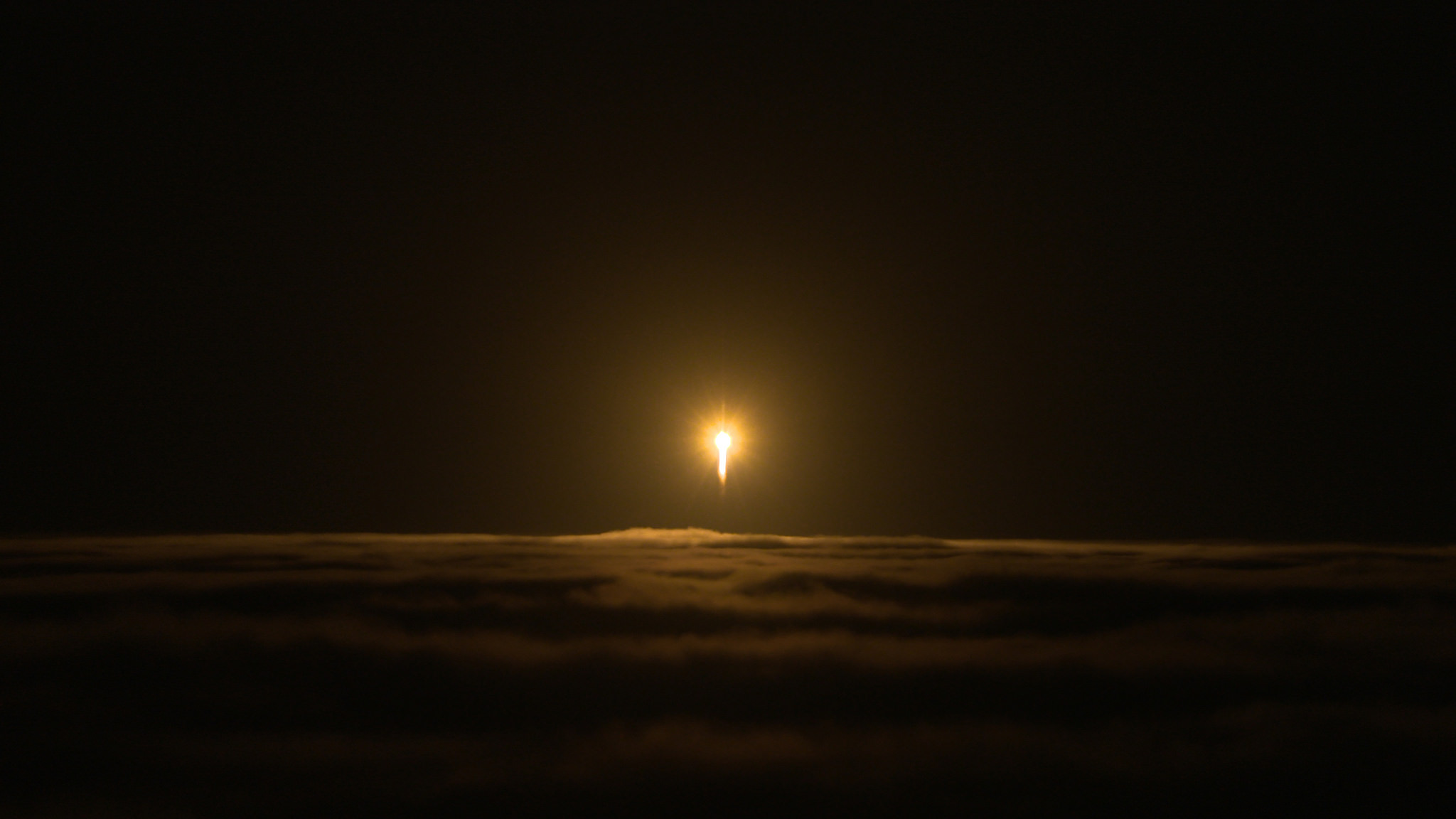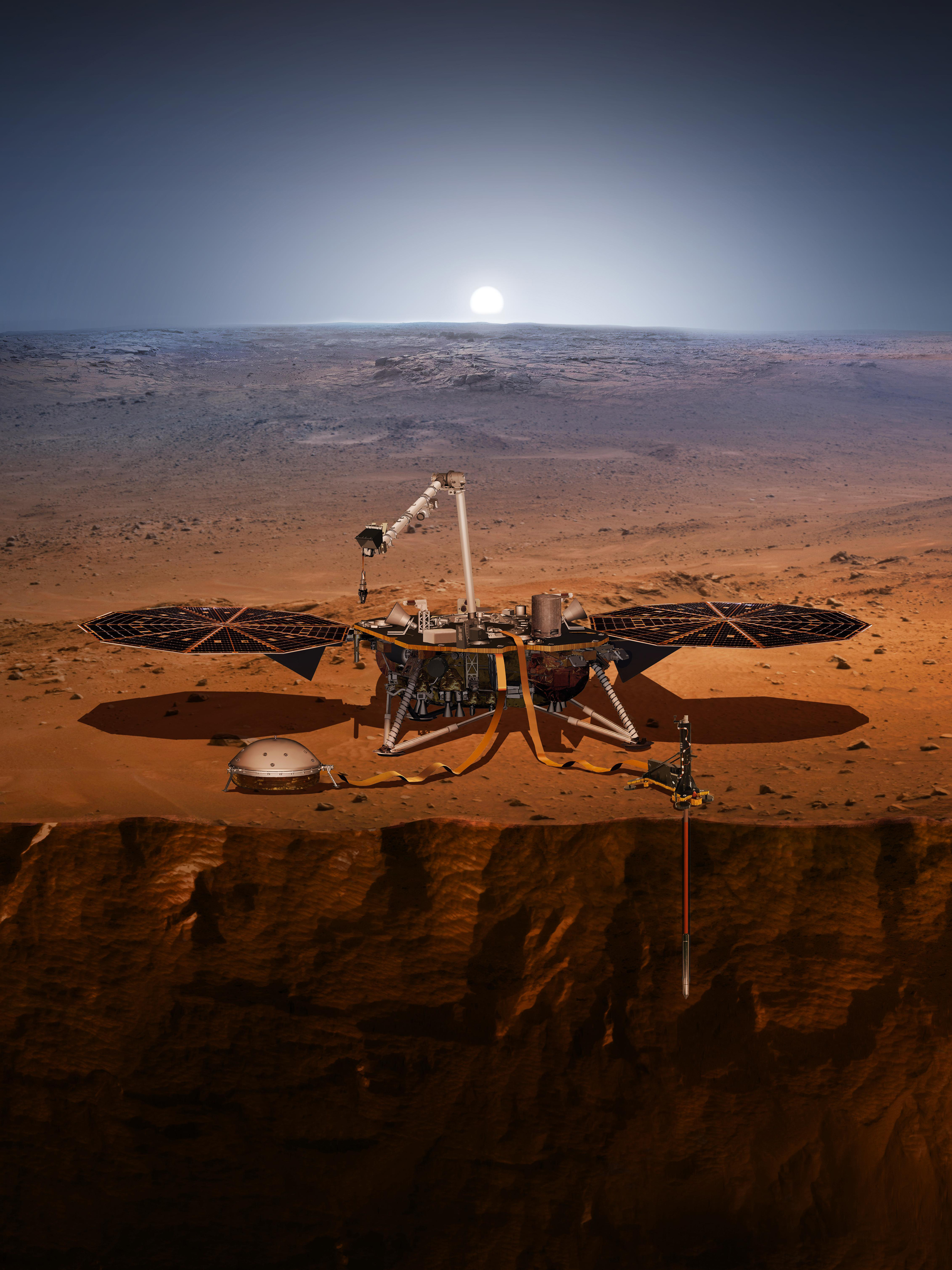NASA's InSight Mars Lander Has Left Earth: So What's Next for the Probe?
VANDENBERG AIR FORCE BASE, Calif. — NASA's InSight Mars lander is now cruising to the Red Planet.
The spacecraft began its 205-day, 301-million-mile (485 million kilometers) journey to Mars by launching atop a United Launch Alliance Atlas V rocket from Vandenberg Air Force Base in southern California early Saturday morning (May 5). The 4:05 a.m. PDT (7:05 a.m. EDT, 1105 GMT) liftoff marked the first time in history that an interplanetary mission began from the U.S. West Coast.
About an hour and a half after it left the ground, the InSight spacecraft separated from the Atlas rocket's Centaur upper stage, beginning its trip to Mars. Within just minutes of that, NASA's Deep Space Network antenna in Goldstone, California, obtained the signal from the now-interplanetary InSight, confirming the lander was alive. [In Photos: Atlas V Launches NASA's InSight Mars Lander]

Set to study the deep interior of the Red Planet — detecting marsquakes and monitoring subsurface heat flow in an effort to understand how rocky planets are formed—InSight has a plunge into the Martian atmosphere followed by a parachute- and thruster-assisted descent to the lava plains of Elysium Planitia in its future. The lander is scheduled to touch down on Mars at around 3 p.m. EST (2000 GMT) on Nov. 26.
Well before that though, beginning 10 days after launch and continuing throughout its cruise phase outwards, InSight will undergo a series of tests and trials to ensure that it is on track and ready for its mission at Mars.
During InSight's nearly 7-month interplanetary cruise, flight controllers will check out and calibrate of the spacecraft's subsystems and science instruments, track the spacecraft via NASA's Deep Space Network, perform attitude adjustments to orient the solar arrays and antennas, and execute maneuvers to keep the spacecraft on its planned trajectory, according to NASA.

Six trajectory correction maneuvers are scheduled for the seven-month trip to Mars, and mission controllers will have two backup or contingency opportunities for additional maneuvers if needed.
Breaking space news, the latest updates on rocket launches, skywatching events and more!
"Some of them we may skip if our injection is really good, others we'll do," Tim Hoffman, InSight project manager at NASA's Jet Propulsion Laboratory in Pasadena, California, told Space.com. "Some we will do just before entry, descent and landing, just to make sure we are hitting the exact corridor for that successful landing."
InSight's first two trajectory maneuvers are scheduled for 10 days and 84 days after launch, on May 15 and July 28, respectively.
These course corrections will make up for an offset in InSight's path to Mars that mission scientists intentionally built into its original trajectory as a planetary protection precaution. The offset avoids the possibility of the Centaur upper stage reaching Mars, having not been cleaned of Earth biologicals to the standards of all Mars-landing spacecraft.
If InSight's course is not corrected 10 days into its flight, the spacecraft would miss Mars by hundreds of thousands of miles. The Centaur, which separated from the Insight spacecraft about 90 minutes after launch, will remain on this Mars-dodging route after InSight steers itself toward the Red Planet.
In between tweaking the trajectory, flight controllers will also test InSight's science instruments, including SEIS, the seismometer provided by a consortium led by the French space agency CNES, and the Heat Flow and Physical Properties Package, the self-hammering mole furnished by the German Aerospace Center DLR.
"We have a payload checkout planned for the middle of the cruise," said Hoffman. "In that period, we will turn on the seismometer, we will turn on the Heat Flow and Physical Properties Package and we'll just check to see that they are alive."
"We obviously cannot take any seismic data or can't do anything with the hammering mechanism on the probe. It is essentially just a test to see if it is still looking good, is it still alive," he explained.
Separate from InSight's cruise, the Mars Cube One (MarCo) deep-space communications satellites that launched alongside and are now trailing the lander to Mars. Each performed a "detumble" maneuver soon after their separation from the Centaur, stabilizing their attitude. They then deployed their solar arrays and began communicating with Earth, NASA officials said.
"Both MarCO-A and B say 'Polo!'" said MarCO mission chief engineer Andy Klesh in a NASA statement. "It's a sign that the little sats are alive and well."
Robert Pearlman is a Space.com contributing writer and the editor of collectSPACE.com, a Space.com partner site and the leading space history news publication. Follow collectSPACE on Facebook and on Twitter at @collectSPACE. Follow us @Spacedotcom, Facebook and Google+. Original article on Space.com.
Join our Space Forums to keep talking space on the latest missions, night sky and more! And if you have a news tip, correction or comment, let us know at: community@space.com.

Robert Pearlman is a space historian, journalist and the founder and editor of collectSPACE.com, a daily news publication and community devoted to space history with a particular focus on how and where space exploration intersects with pop culture. Pearlman is also a contributing writer for Space.com and co-author of "Space Stations: The Art, Science, and Reality of Working in Space” published by Smithsonian Books in 2018.In 2009, he was inducted into the U.S. Space Camp Hall of Fame in Huntsville, Alabama. In 2021, he was honored by the American Astronautical Society with the Ordway Award for Sustained Excellence in Spaceflight History. In 2023, the National Space Club Florida Committee recognized Pearlman with the Kolcum News and Communications Award for excellence in telling the space story along the Space Coast and throughout the world.
